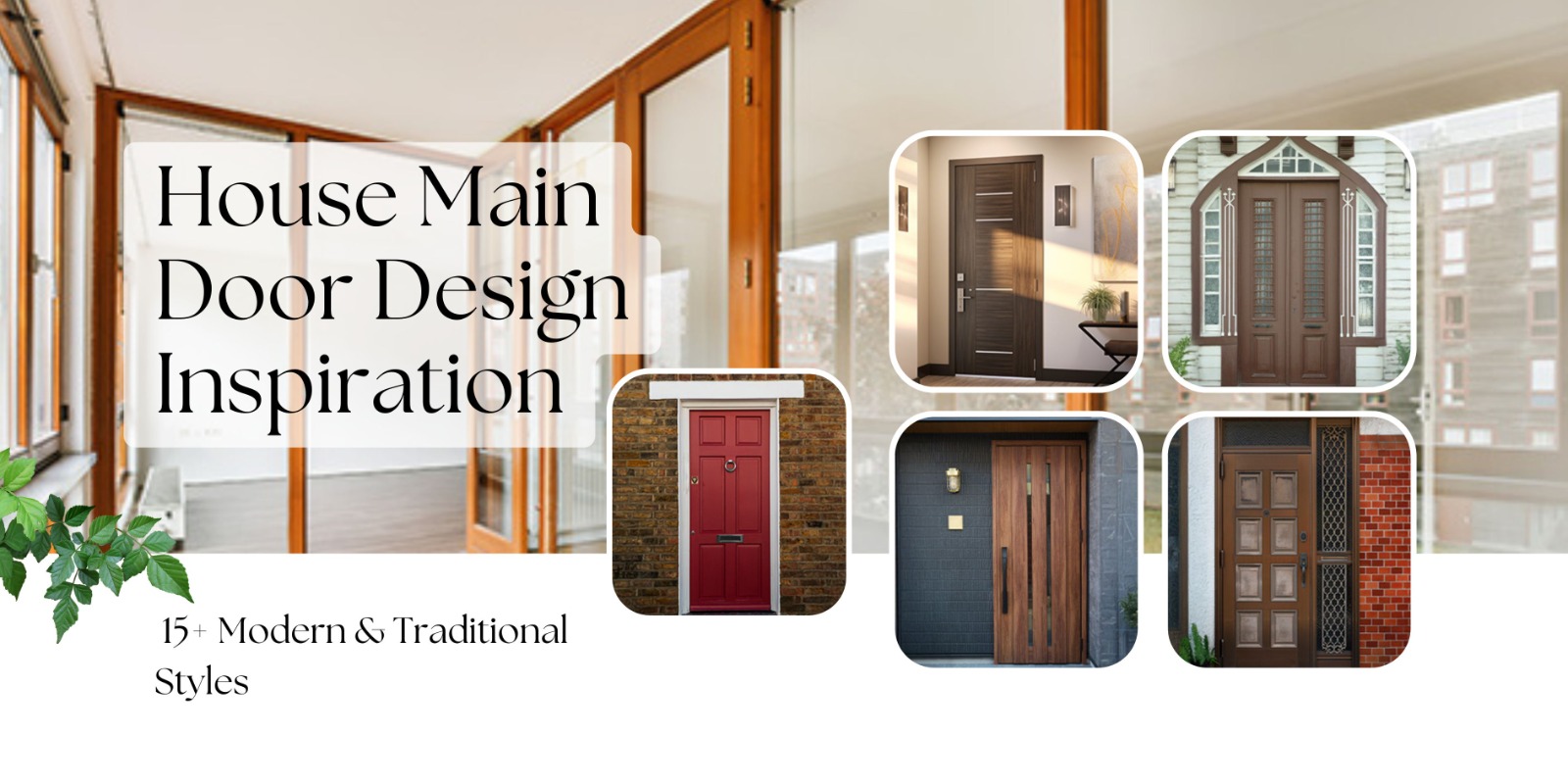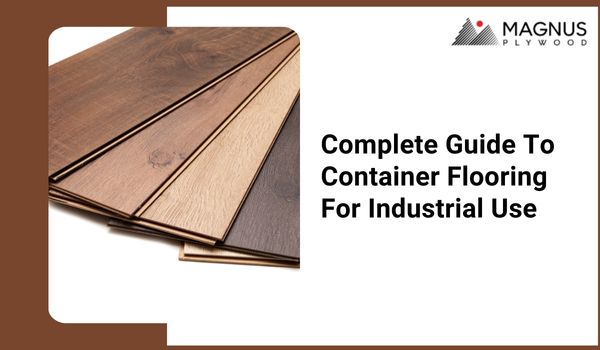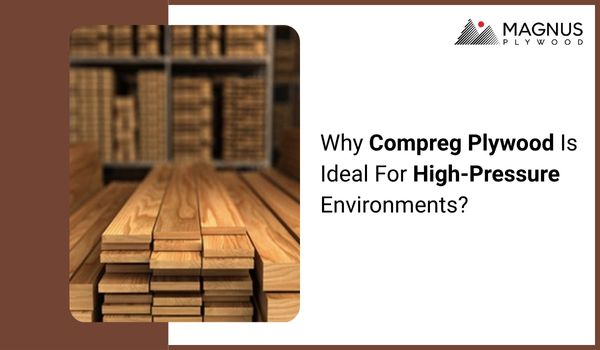Compreg plywood is one of the most popular choices for the most demanding industrial applications. This material is curated for builders and designers who seek a plywood that can withstand extreme pressure and temperature variations.
Whether you are considering using it in marine, automotive, defence, or heavy engineering projects, this material is your go-to choice. However, the main problem seen here is with the numerous compreg plywood manufacturers and grades available in the market. How do you choose the right compreg plywood? Are you also confused here? If so, you are in the right hands.
Today, in this quick guide, Magnus Plywood is here to highlight the top 10 factors to consider while picking the ideal compreg plywood for your projects. So, without ado, quickly dive into this checklist and make an informed decision that aligns with your industrial requirements.
Top 10 Factors to Consider While Choosing the Right Compreg Plywood Grade
When it comes to buying compreg plywood, not all grades are created equal. Below are the 10 most important factors that will guide you in selecting the ideal grade of compreg plywood for your application:
1. Understand the Application Requirement
The first factor to consider while buying industrial plywood is to assess where and how the compreg plywood will be used. Different industries, be it marine, automotive, aerospace, or railways, have varying demands in terms of strength, density, and weather resistance.
For instance, marine applications require a high-resistance plywood grade that can endure prolonged moisture exposure, while the automotive sector needs lightweight yet strong material for interior parts.
2. Check the Load-Bearing Capacity
The second factor to consider while purchasing compreg plywood is to check its load-bearing capacity. Ideally, you can find that every compreg plywood grade differs a lot, which varies its ability to withstand loads.
If you are looking for industrial plywood that is suitable for high-stress environments like platforms, flooring in transport vehicles, or structural supports, consider opting for higher-grade plywood with superior compressive and bending strength. This will ensure it perfectly aligns with your project’s requirements.
3. Moisture and Weather Resistance
The third factor to consider while choosing the right compreg plywood manufacturers is to understand whether their industry plywood is built to offer resistance to moisture and weather in the most harsh environmental conditions.
Always ensure the grade you select is pressure-impregnated with resin and bonded under high heat. This will enhance its resistance to water, humidity, and chemical exposure, making it ideal for marine, defence, or outdoor applications.
4. Adhesive and Resin Type
Adhesive and resin type is the fourth factor to consider while choosing the ideal compreg plywood. The type of adhesive used in manufacturing plays a critical role in determining the durability and quality of industrial plywood.
Phenol-formaldehyde resin is commonly used in high-grade compreg plywood due to its excellent bonding properties and resistance to water and heat. Hence, always ensure the grade you choose uses high-quality resin as per IS: 710 or other relevant standards.
5. Thickness and Density Options
The fifth factor to consider while finding the right compreg plywood manufacturers is to check whether their compreg plywood provides options in thickness and density. Different grades offer different thicknesses and densities.
If you are considering using industrial plywood for heavy-duty applications, you should consider denser and thicker compreg plywood for added durability and stability. However, for projects where weight needs to be minimised, such as in aviation or automobile interiors, always opt for a lightweight yet strong grade of plywood. This will ensure the thickness you choose offers the blend of structural load and functional purpose.
6. Compliance with Industry Standards
The sixth factor to consider while choosing the ideal compreg plywood is to check whether it complies with industrial standards. Always ensure the compreg plywood meets IS standards like IS: 5509, IS: 710, IS: 303 or other international certifications.
These standards ensure the industrial plywood has passed quality tests and offers the combo of the highest strength, resistance, and durability. You can consider buying from a compreg plywood manufacturer who follows these benchmarks; this will add an extra layer of trust and reliability.
7. Resistance to Termites and Fungi
Checking resistance to termites and fungi is the seventh factor to consider while buying industrial plywood. Not all compreg plywood is built to handle biological threats like fungi, mould, and termites.
Good quality compreg plywood is chemically treated to resist such infestations. Hence, if you are considering industrial plywood for damp, coastal, or underground environments, make sure the grade offers anti-termite and anti-fungal protection.
8. Surface Finish and Uniformity
Checking out the finish of the surface and its uniformity is the eighth factor to consider while shopping for industrial plywood. You need to understand that the surface finish impacts not only aesthetics but also how the plywood can be further processed or coated.
Hence, always look for a smooth, uniform surface that has no warping, gaps, or delamination. This will ensure better finishing when laminates, paints, or other surface treatments are applied, improving its overall functionality.
9. Manufacturer Reputation and After-Sales Support
The ninth common factor to consider while choosing the ideal compreg plywood manufacturers is to check their reputation and after-sales service. With so many compreg plywood manufacturers available in the market, it is essential to choose the right one that has a proven track record.
Hence, always look for brands with strong industry references, client testimonials, and timely customer support. Finding a reputable manufacturer will offer more consistent product quality and better post-sale assistance.
10. Cost vs. Value Ratio
Understanding the cost vs. value ratio is the final factor to consider while buying compreg plywood. Always remember that price should never be the only deciding factor.
Consider evaluating the value you are getting at a given price point, such as durability, resistance, quality of raw materials, and life expectancy. This is essential because a slightly higher investment in a top-grade industrial plywood can significantly reduce long-term maintenance and replacement costs.
Final Words
Selecting the right compreg plywood grade is more than just picking a sheet; it is about investing in durability, performance, and long-term value. Whether your project involves marine structures, automotive components, or heavy-duty industrial platforms, taking the time to evaluate each of these ten factors will ensure you get the best material for your needs.
From understanding your application to checking load capacity, weather resistance, and industry compliance, every detail counts when you are building for strength and longevity. Are you ready to make the right choice for your next industrial project?
Contact Magnus Plywood today, one of the leading compreg plywood manufacturers, and get a chance to get expert recommendations that will allow you to build every project with confidence.
FAQs
1. What is compreg plywood?
Ans. Compreg plywood is a high-strength, industrial-grade plywood made by impregnating veneers with synthetic resins and compressing them under high pressure and temperature.
This process enhances its durability, making it resistant to moisture, chemicals, and extreme weather conditions. This material is an ideal choice for marine, automotive, defence, and heavy engineering applications. It offers excellent load-bearing capacity, dimensional stability, and long service life.
2. What are the different grades of compreg plywood?
Ans. Compreg plywood, also known as a popular type of industrial plywood, is curated in various grades. Each grade, be it your General Purpose, Medium Duty, or Heavy Duty, varies considerably on the type of resin used, its density, and its usage. Hence, understanding the strength, moisture resistance, and load-bearing capacity of your project is the key while you are picking the ideal compreg plywood.
3. What are the standard thickness options available for each grade?
Ans. The standard thickness options you can explore under each grade range from 4mm to 100mm. You can consider the right one depending on what the project demands. For instance, if you are considering lighter or general grade, which ranges between 4mm and 6mm, you can use them in your interiors or low-load applications.
Conversely, if you are considering medium or heavy-duty grades which range between 12mm, 25mm, 50mm, or 100mm, you can opt for supporting the projects that demand high-pressure, high-load, and structural stability.
4. How do I choose the right grade of compreg plywood for my project?
Ans. For choosing the right grade of compreg plywood for your project, several factors require careful consideration. Firstly, consider assessing the environmental conditions, then understand the type of application you are considering to use this industrial plywood and finally understand its load requirements.
For example, if you have undertaken marine or outdoor projects, choose high-moisture-resistant compreg plywood. If you are looking for interiors or low-load areas, you can consider general-grade compreg plywood. In addition to this, you also need to consider other factors such as thickness, density, and its compliance with IS standards.
5. Which compreg plywood grade is best for industrial applications?
Ans. Heavy Duty Grade is one of the best choices in compreg plywood for industrial applications. This material offers the highest strength, superior bonding, and excellent resistance to heat, chemicals, and moisture.
This makes this industrial plywood an ideal choice for platforms, floors, and structures which are used in various sectors, from marine, transport, defence, to heavy machinery.




